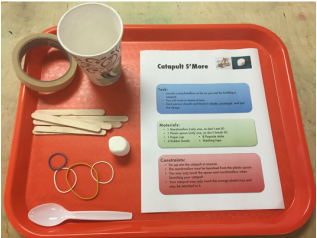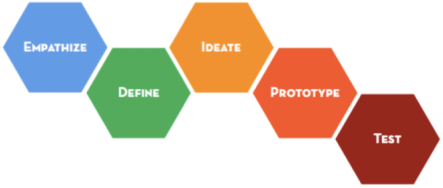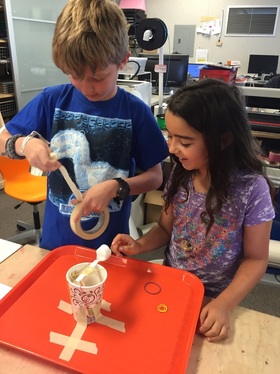I start by introducing the process of Design Thinking that originated at IDEO and Stanford's d.school:
What is the best part of the design?
- "The spoon is the best part of the design because you tap the end of the spoon and it launches and it goes very very far."
- "The broken popsicle sticks were the best part of the design. They kept the cup in place."
- "The best part is the tension in the spoon when we pull the spoon back."
- "The rubber band because it brought great friction."
- "Re-designing because it's fun to take things off and put things on."
What is something you changed during the design process?
- "We changed the angle of the spoon because we thought it [would] go farther."
- "Adding more rubber bands because the spoon slipped off."
- "Turning the cup over because it worked better."
- "Using the rubber bands because it gave the spoon a lot of force."
What did you find challenging about working in a group? What did you like about it?
- "I liked blending our ideas."
- "That you had two brains [instead of] one. It did not work good in the beginning but then it got really good."




 RSS Feed
RSS Feed
